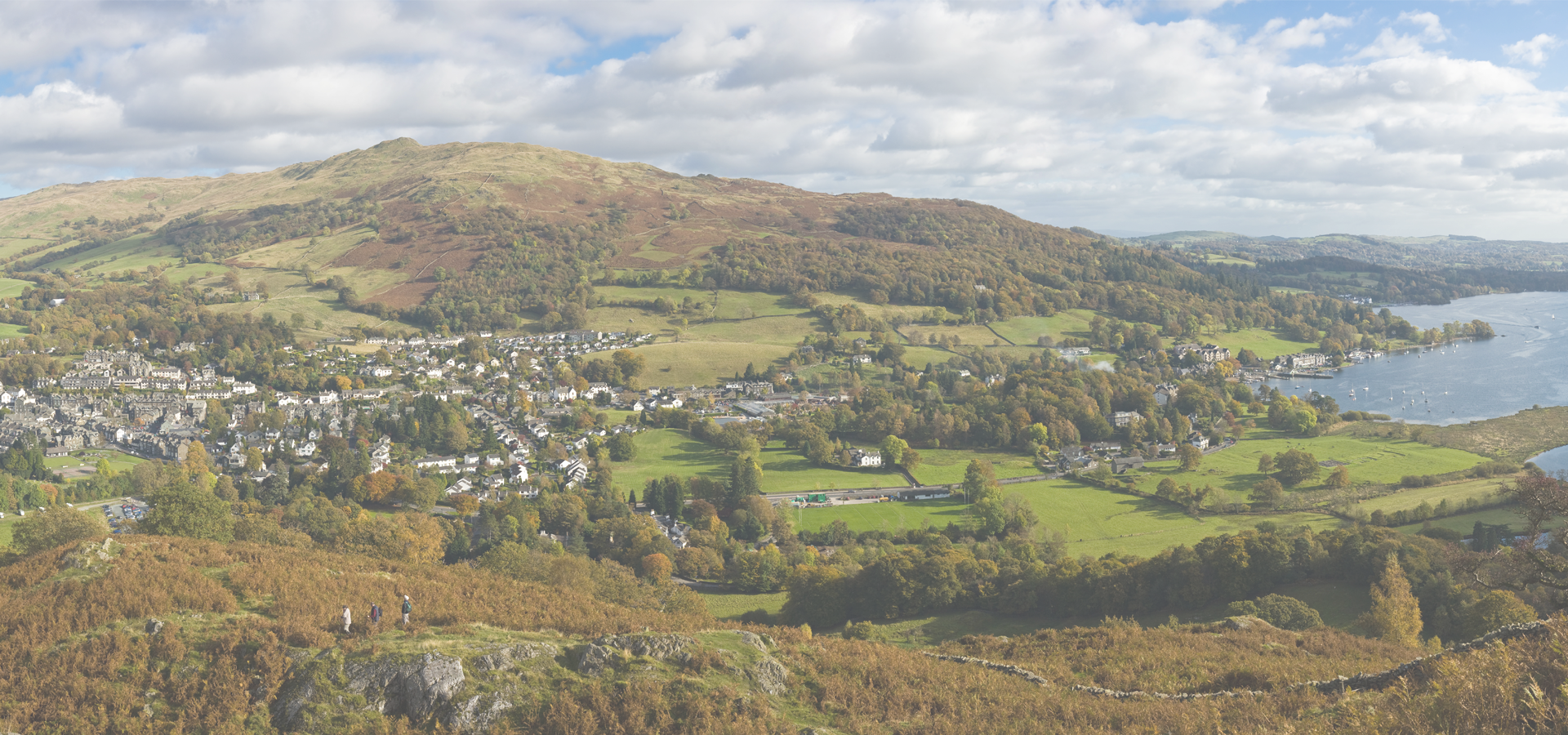🏴 Architect/Furniture Designer Mackay Hugh (M.H.) Baillie Scott is associated with Bowness-on-Windermere. From 1883 to 1885 he studied Scientific Farming and Estate Management at the Royal Agricultural College in Cirencester, Gloucestershire.
Bowness-on-Windermere, Cumbria, England, United Kingdom
🏴 Bowness-on-Windermere is a town and former civil parish, now in the parish of Windermere, in South Lakeland, Cumbria, England. Due to its position on the banks of Windermere, the town has become a tourist honeypot. Although their mutual growth has caused them to become one large settlement, the town is distinct from the town of Windermere as the two still have distinguishable town centres. Historically part of Westmorland, in 2012, Bowness was one of the official stop off points for the Olympic torch before it made its way to the Olympic Games opening ceremony.
Etymology 'Bowness' (originally 'Bulnes') means 'the headland where the bull grazes', from OE 'bula', 'bull' and OE 'næss', 'headland', perhaps referring to the keeping of the parish bull. The 'on-Windermere' part was added later (found on the Ordnance Survey map of 1899).
History The town's ancient parish church of St Martin was built in 1483 but of an older foundation. The former rectory is said to have been built in 1415.
A grammar school was founded in about 1600. A new building was opened in 1836, funded by local landowner John Bolton of Storrs Hall. The foundation stone was laid by William Wordsworth.
During the 19th century, Bowness grew from a small fishing village to a town living almost entirely off tourism and holiday homes. It was the centre of the boat-building industry that provided the sailing yachts, rowing boats and steam launches used on the lake. A large number of hotels and boarding houses gave employment to the permanent population of the town. Queen Adelaide visited Bowness in 1840, staying at the Royal Hotel. The arrival of the railway in 1847 in Windermere (the residents of Bowness had opposed a station in their own town) provided much of the momentum for the growth.
Bowness-on-Windermere became a civil parish in 1894 and an urban district council was formed for the town at the same time. In 1905, the council merged with that of Windermere, and the two civil parishes merged on 1 April 1974 under the name of Windermere. The civil parish of Windermere is governed by a town council, Windermere and Bowness Town Council.
Transport Windermere railway station offers train and bus connections to the surrounding areas, Manchester, Manchester Airport and the West Coast Main Line, and is about 1.5 miles (2.4 km) from the lakefront. Both Stagecoach and the local council provide frequent connecting buses from Bowness Pier; Stagecoach's open-top double-decker buses travel through the centre of town and continue to Ambleside and Grasmere, while the council's wheelchair-accessible minibuses run around the edge of town. The Windermere Ferry, a car carrying cable ferry, connects Bowness at Ferry Nab on the eastern side of the lake with Ferry House Far Sawrey on the western side of the lake, a trip of approximately 10 minutes. For those looking for a more leisurely way to travel, Windermere Lake Cruises operate regular lake cruises running from Bowness Bay to the north end of the lake at Ambleside and south end at Fell Foot.
Media Local news and television programmes are provided by BBC North West and ITV Granada. Television signals are received from the local relay transmitter.
Local radio stations are BBC Radio Cumbria on 104.2 FM, Heart North West on 102.3 FM, Smooth Lake District on 100.8 FM, and community on-line stations are Lake District Radio and Bay Trust Radio.
The town's local newspapers are The Westmorland Gazette and North West Evening Mail.
Readers of Arthur Ransome's Swallows and Amazons series of books will recognise Bowness as the lakeside town of 'Rio'. The collection at the Windermere Steamboat Museum on Rayrigg Road includes TSSY Esperance, 1869; one of the iron steamboats on which Ransome modelled Captain Flint's houseboat. Bowness-on-Windermere is also home to The World of Beatrix Potter attraction, opened in July 1991 by Victoria Wood.
Ambleside & Waterhead, Cumbria, England

Bowness-on-Windermere has a population of over 3,814 people. Bowness-on-Windermere also forms part of the wider South Lakeland district which has a population of over 102,301 people. Bowness-on-Windermere is situated 14 km west of Kendal.
-
Mackay Hugh Baillie Scott |
-
Robert Walker |
Architect Robert Walker is associated with Bowness-on-Windermere.
🏴 Northallerton 54.338
🇮🇪 Downpatrick 54.325
🏴 Ellesmere Port -2.902
🏴 Haddington -2.782
Locations Near: Bowness-on-Windermere -2.9223,54.3631
🏴 Kendal -2.756,54.351 d: 10.9
🏴 Lancaster -2.803,54.05 d: 35.7
🏴 Penrith -2.755,54.665 d: 35.2
🏴 Barrow-in-Furness -3.226,54.111 d: 34.3
🏴 Barrow in Furness -3.226,54.111 d: 34.3
🏴 Poulton-le-Fylde -2.995,53.847 d: 57.6
🏴 Carlisle -2.944,54.891 d: 58.7
🏴 Blackpool -3.05,53.8 d: 63.2
🏴 Preston -2.699,53.761 d: 68.6
🏴 Whitehaven -3.586,54.548 d: 47.5
Antipodal to: Bowness-on-Windermere 177.078,-54.363
🇳🇿 Dunedin 170.474,-45.884 d: 18962.3
🇳🇿 Christchurch 172.617,-43.517 d: 18766.4
🇳🇿 Invercargill 168.373,-46.413 d: 18938.7
🇳🇿 Canterbury 171.58,-43.543 d: 18747.7
🇳🇿 Queenstown 168.658,-45.033 d: 18815.7
🇳🇿 Wellington 174.767,-41.283 d: 18550.7
🇳🇿 Hutt 174.917,-41.217 d: 18544.6
🇳🇿 Lower Hutt 174.917,-41.217 d: 18544.6
🇳🇿 Upper Hutt 175.05,-41.133 d: 18536.4